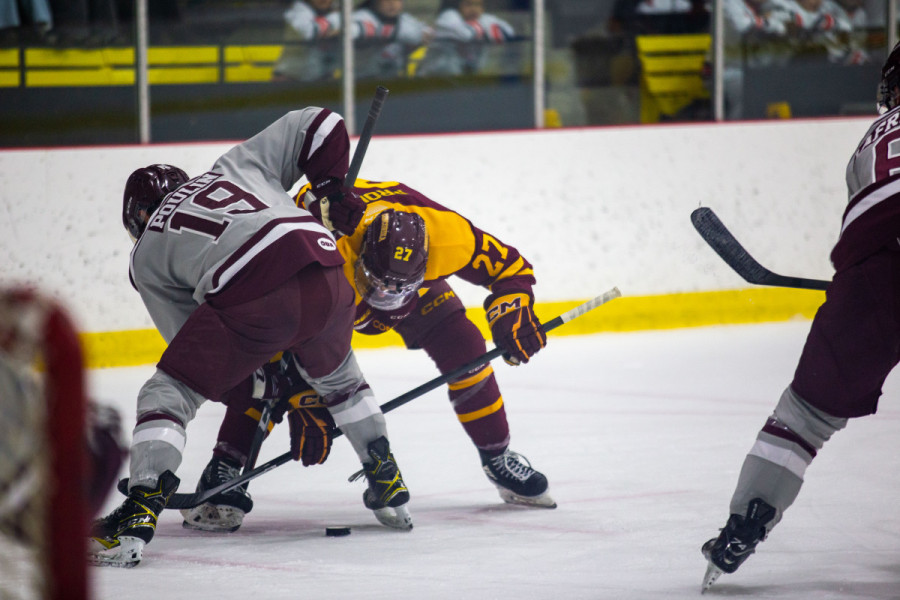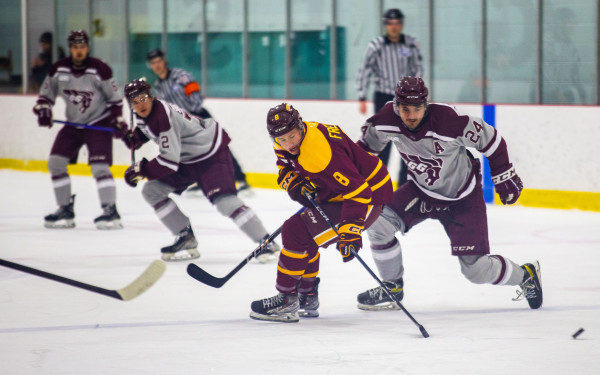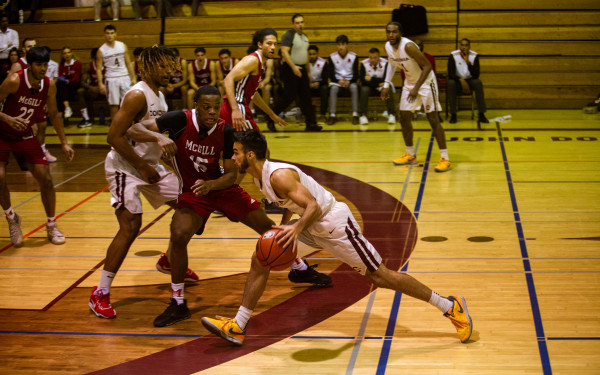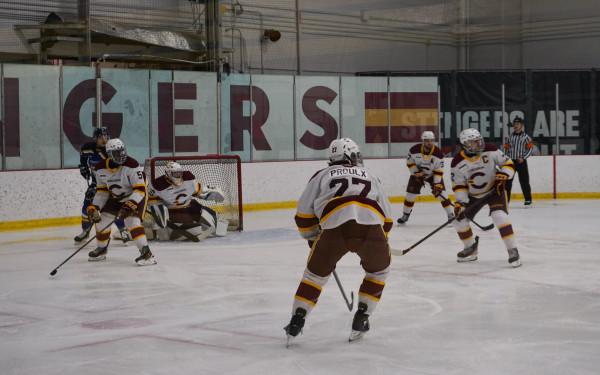Potential policy change could harm U Sports men’s hockey
Potential policy change could harm U Sports men’s hockey
U Sports men’s hockey could have a major obstacle coming its way.
Hockey writers have begun wondering about the National Collegiate Athletic Association (NCAA)—which governs varsity athletics in the United States—possibly changing its amateurism policy to allow eligibility to junior hockey players from the Canadian Hockey League (CHL).
The NHL’s agreement with the CHL forces NHL teams to send their prospects back to their CHL teams if they are not yet ready for the NHL. Therefore, the junior level is filled with top NHL prospects already signed to their entry-level contracts.
CHL players receive stipends for their services, and go toe-to-toe with players already under professional contracts, deeming the entire league professional by NCAA standards. As such, players relinquish NCAA eligibility by playing a single CHL game.
Sportsnet’s Elliotte Friedman said in February, “We are headed towards a future of where CHL players are going to be able to play NCAA hockey. The question is when.”
CHL players that don’t make it to the NHL or another professional league often turn to U Sports hockey to continue playing hockey while pursuing higher education.
As a result, former CHL players make up the majority of U Sports men’s hockey rosters. Twenty-one out of the 25 members on the Concordia Stingers men’s hockey team previously played in the CHL.
“[The current policy] kind of protected us a little from losing talent down to the U.S. colleges,” said Concordia Athletics Director D’Arcy Ryan.
However, the NCAA’s inception of the name, image and likeness (NIL) rules in 2021—which allows athletes to receive compensation for their personal branding—incited a shift in leniency regarding amateur versus professional status of athletes.
CHL players would be attracted to American colleges rather than Canadian universities should they have the choice, largely because of the discrepancy in allowable scholarships.
Ryan explained that U Sports only allows scholarships to cover tuition and other compulsory academic fees, meaning that Canadian universities cannot offer much money to entice an athlete. “Whereas in the States, making living accommodations, room, board, all that would be covered. We can't compete with that,” he said.
However, an NCAA policy change is not as simple as it may seem. The earliest the policy could be discussed is in April at the annual college hockey coaches conference. By that time, the U Sports men’s hockey recruitment cycle for 2024-25 will have mostly run its course.
It would also take some time yet for the policy to be changed. The decision would need to go through several different committees within the NCAA for approval and execution, according to Jim Connelly of United States College Hockey Online.
“This is something that we're gonna talk about in April. We might vote on it in June, and then next December there'll be a conference where somebody else will hear it and they'll vote on it,” he said, adding that NCAA operations mimic parliamentary order.
But Adam Wodon, managing editor of College Hockey News, does not believe that the change will come from the NCAA itself. He thinks it is more likely that a CHL player sues the NCAA and demands to be made eligible.
“The NCAA keeps losing every court decision that there is,” he said. “That takes some kid playing [in the CHL] to say, ‘I want to go play in the NCAA. They’re not letting me, so I’m going to sue them.’ to do that. And then some court will say, ‘Yeah, you can’t stop them from going.’ And then it’s just open season at that point.”
U Sports declined The Link’s interview request and indicated that it has “no comment to make about media reports on a potential coaches association vote in the United States.”
UPDATE: In an earlier version of this article, Adam Wodon’s quote was mischaracterized. The Link regrets this error.
This article originally appeared in Volume 44, Issue 13, published April 2, 2024.


_600_832_s.png)

_600_375_90_s_c1.jpg)


